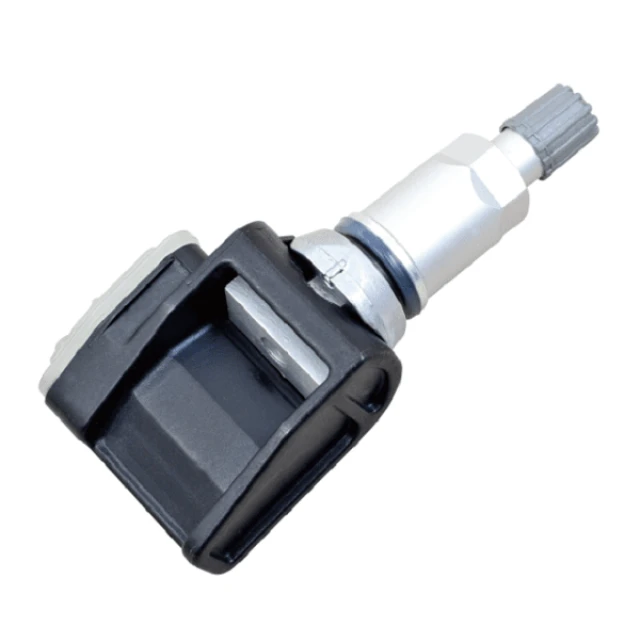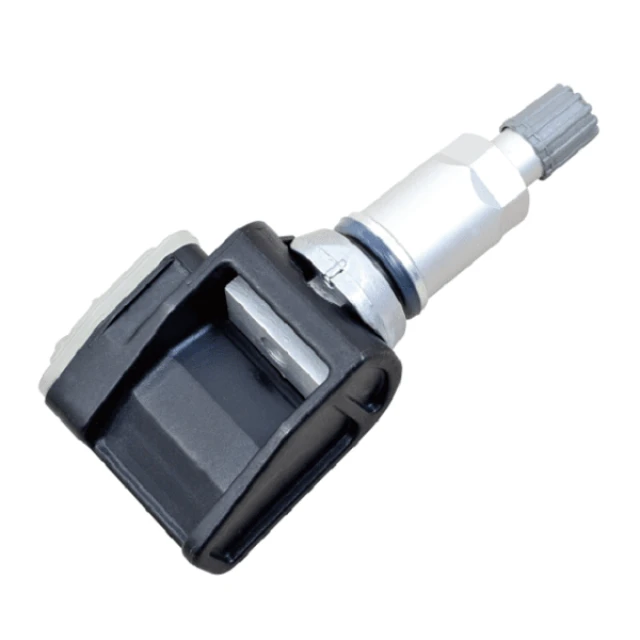As the automotive industry advances toward intelligence and electrification tires as the only contact point between vehicles and the road directly influence driving safety fuel economy and overall driving experience but traditional tire management relies on manual inspection which is inefficient and likely to miss potential issues. The wide application of Tire Pressure Monitoring Systems (TPMS) represents a shift from "reactive maintenance" to "proactive prevention" making it an essential part of the intelligent mobility ecosystem and this article will analyze how TPMS redefines travel safety and efficiency from three aspects: technical principles user value and industry trends.
TPMS uses pressure and temperature sensors integrated into or attached to tires to collect real-time data and transmit it to the vehicle system or mobile app with core functions including anomaly detection (identifying low tire pressure from leaks high tire pressure with blowout risk and abnormal temperature from overload or brake overheating) graded alerts (triggering different alerts like yellow warning lights and red emergency alerts based on risk levels to prevent driver negligence) and data logging (storing historical tire pressure data to analyze tire wear and potential issues).
Internal sensors are installed inside wheels to provide more accurate data but need professional tools for battery replacement (with 5-10 year lifespan) while external sensors are screwed onto valve stems for easy installation but are vulnerable to external environmental factors like mud and impact.
Statistics show up to 20% of traffic accidents are caused by low tire pressure yet most drivers only notice the problem when tires are visibly flat. The value of TPMS lies in preventing blowouts by alerting drivers of leaks 1-2 hours in advance to allow safe pulling over extending tire life by over 30% through maintaining balanced pressure to avoid uneven shoulder wear from unbalanced pressure and reducing roadside breakdown risks by enabling smartphone-based tire pressure checks before long journeys to prevent stranding due to tire issues.
A logistics company installed tire pressure sensors on its fleet and saw a 65% drop in tire blowout incidents plus saved about 120,000 yuan in annual maintenance costs.
Tire rolling resistance accounts for 15-20% of a vehicle’s total energy consumption and every 10% decrease in tire pressure increases rolling resistance by around 5% leading to higher fuel consumption. Tire pressure sensors save costs by enabling real-time tire pressure adjustment (drivers maintain pressure at the manufacturer’s recommended level usually marked on door frames or fuel caps based on sensor feedback) reducing unnecessary refueling (a typical family sedan with 20,000 km annual mileage saves 500-800 yuan in fuel costs by maintaining proper pressure) and lowering tire replacement frequency (sensors help users avoid premature replacement caused by excessive center tread wear from consistent low pressure).
For commercial vehicle fleets tire pressure sensors offer more significant economic value through centralized monitoring (managing tire pressure data of hundreds of vehicles via a cloud platform to optimize maintenance resource allocation) predictive maintenance (predicting remaining tire lifespan based on historical data to avoid breakdown penalties) and carbon emission compliance (improved fuel efficiency directly cuts CO2 emissions to help companies meet ESG requirements).
A taxi company deployed tire pressure sensors and achieved an 8% reduction in annual fuel consumption per vehicle equivalent to 2.3 tons less CO2 emissions.
Modern tire pressure sensors have gone beyond basic monitoring and integrated into smart ecosystems through Bluetooth/GPS connectivity (synchronizing real-time data to mobile apps for remote viewing and historical data export) in-vehicle infotainment integration (combining with navigation and entertainment systems to display tire pressure information visually on dashboards or HUDs) and voice interaction (some high-end models support voice alerts for abnormal tire pressure to enhance driving safety).
TPMS provides personalized settings (users customize tire pressure alert thresholds like automatic warning level adjustment for low winter temperatures) repair recommendations (the system automatically suggests nearby repair shops and sends coupons after sensors detect abnormalities) and insurance integration (some insurers offer premium discounts for vehicles with installed sensors to encourage safe driving).
A road trip traveler encountered a tire pressure alert in a remote mountainous area and the app located the nearest open repair shop within 30 km and planned the optimal route to prevent potential issues.
DIY external sensors allow users to tighten them onto valve stems manually with 10-minute installation suitable for temporary use or used cars while professional internal sensors require tire removal for installation but provide more stable data suitable for new cars or high-end models.
TPMS supports multiple vehicle types with various tire sizes (13-24 inch rims) including cars SUVs trucks and motorcycles and has extreme environment tolerance (sensor casings use waterproof dustproof and impact-resistant materials to operate stably at -40°C to 125°C).
In the aftermarket users can purchase sensors to replace existing TPMS systems for older vehicles without standard equipment while in OEM integration automakers like Tesla and BYD have made smart tire pressure sensors standard in new vehicles.
TPMS integrates with ADAS (feeding tire pressure data into autonomous driving systems to dynamically adjust suspension stiffness and braking pressure for better handling stability) enables predictive braking (triggering ABS pre-loading to shorten braking distance when sensors detect sudden tire pressure drops) and supports intelligent tire management (predicting replacement time based on tire wear data and automatically ordering replacement tires).
Major global markets like the EU and China have mandated TPMS for new vehicles to promote sensor technology standardization. Data collected by sensors (tire pressure temperature and mileage) can be used for tire R&D and insurance pricing for data monetization. Collaboration between automakers and tech companies enables open platforms where third-party developers create applications like road condition prediction based on tire pressure data.
By 2030 tire pressure sensors will integrate with smart tires road sensors and weather data to form a "tire-vehicle-infrastructure" network for truly "zero-accident mobility."
The evolution of tire pressure sensors reflects the automotive industry’s shift from the "mechanical era" to the "data era." It addresses safety and efficiency issues and redefines the relationship between people vehicles and roads through data flow. For consumers it is an "invisible guardian" for road safety; for businesses it is a "digital lever" for cost reduction and efficiency improvement; for the industry it is a "building block" of the smart transportation ecosystem.

 IV. Easy Installation, Wide Compatibility: A "No-Hassle" Solution for All Scenarios
IV. Easy Installation, Wide Compatibility: A "No-Hassle" Solution for All Scenarios